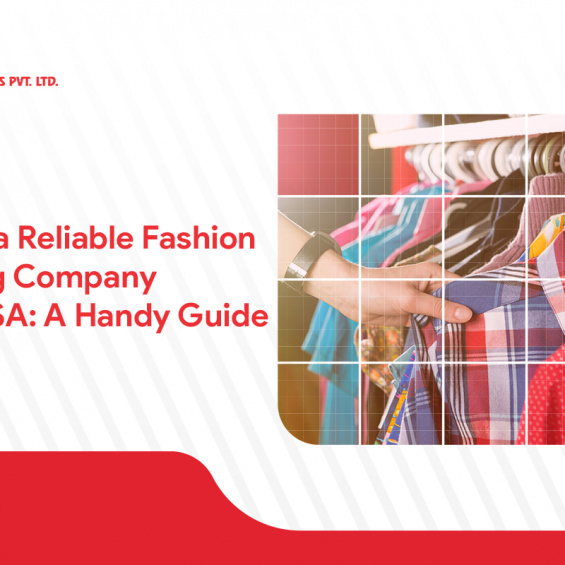Solutions to the Clothing Supply Chain Problems
The global clothing supply chain is a complex and interconnected network of manufacturers, retailers, consumers and distributors. However, it is plagued by various challenges, including ethical concerns, environmental impact, and operational efficiencies. To address these issues, it is essential to implement solutions that streamline processes, improve transparency and promote responsible sourcing.
Let us uncover the effective strategies for mitigating the problems within the clothing supply chain and fostering a more sustainable and ethical industry.
What Are the Clothing Supply Chain Problems and Solutions?
In a dynamic industry, addressing key clothing supply chain challenges is crucial. Explore innovative solutions toimprove operations for the various challenges that are faced by clothing companies.
1. Inefficiency in Supply Chain Management
Clothing supply chains frequently encounter unforeseen disruptions like material scarcity, logistics delays, energy shortages, and staffing issues, increasing manufacturing and distribution costs. The lack of transparency in the intricate network of these supply chains contributes to inefficiencies, causing delays in product delivery.
Solution:
To minimize the supply chain hurdles, businesses must embrace technology and use the software. Many companies use software like ERP and PLM that enables them to simplify the supply chain process and reduce errors.
Fashion brands can switch to diverse smart manufacturers and suppliers to eliminate shipping delays. Digital and logistics design tools can help brands optimize their operations effectively.
2. Environmental Impact
The dyeing process in the apparel supply chain wastes several thousand gallons of water each year. By being the second largest consumer of water, the industry uses about 700 gallons of water to manufacture one cotton shirt.
In 2018, Americans alone produced 11,300 thousand tons of textile waste. The production of synthetic waste has been a significant concern behind the leading marine pollution.
Solution:
The primary driver of environmental exploitation in apparel manufacturing can be mitigated by shifting to natural chemicals and waterless dyeing processes, reducing pollution and water wastage.
The fashion industry supply chain should embrace renewable energy sources, eco-friendly packaging, and promote recycling. Employing analytics for demand forecasting is essential to address the problem of overproduction.
3. Labour Rights Issues
The fashion industry is struggling with significant labour and human rights challenges today. Concerns about unsafe working conditions have raised alarms among both consumers and businesses.
The rise of sweatshops, where individuals endure prolonged hours at minimal wages in unhealthy environments, is undermining the quality of work and affecting the entire clothing supply chain.
The fast fashion sector, known for offering large quantities at lower prices, intensifies labour issues by underpaying workers and subjecting them to unfavourable working conditions. Incidents such as labour strikes can disrupt business operations, leading to delayed commitments.
Solution:
Businesses must carefully choose ethical suppliers committed to fair labour practices, ensuring fair pay and healthy working conditions for the timely delivery of quality goods.
Brands must focus on holistic development across the supply chain for clothing, prioritizing bottom-to-top improvements to provide optimal facilities for workers. It’s crucial to confirm that suppliers avoid involvement in child labour or forced labour practices.
4. Pressure to Quickly Adapt to Dynamic Customer Demands
The fashion industry is excessively affected by the latest trends, changing seasons, and volatile consumer preferences.
Rapid shifts in these trends create several challenges for the apparel industry, especially inventory management.
Solution:
Businesses should adopt data-backed decision-making and demand-driven approaches to improve forecasting. Real-time data can help brands decide on quantity, process, and production timings.
5. Securing Reliable Suppliers in the Industry
Securing reliable suppliers is a common challenge in the supply chain for clothing. The unpredictability in supplier performance, issues with quality control, and potential disruptions can hinder the smooth flow of materials and production.
Solution:
Establishing strong partnerships with suppliers through transparent communication and mutual understanding is crucial to address this problem.
Implementing robust supplier vetting processes, regular performance evaluations, and fostering open dialogues can enhance reliability and ensure a smooth flow.
Navigating the Fashion Industry: A Final Look At Transformative Solutions To Overcome Clothing Supply Chain Challenges
The clothing supply chain in the fashion industry is experiencing several challenges that can be effectively tackled. However, businesses should innovate and adapt to face these issues with the help of technology and better practices.
Greener approaches, tying up with ethical suppliers, and using environment-friendly packaging are a few of the many practices an apparel brand can adopt. Visit Saraogi Super Sales to resolve all your supply chain issues with the assurance of quality apparel services.
Read More: Clothing Supply Chains In The USA [Everything You Need To Know]
FAQs
1. Why is transparency crucial in the clothing supply chain?
2. How can the fashion industry address environmental concerns in its supply chain?
3. What role does technology play in optimizing clothing supply chains?
4. How can small businesses enhance their resilience in the clothing supply chain?
Specializing in sourcing and exporting
a wide range of garments and apparel







